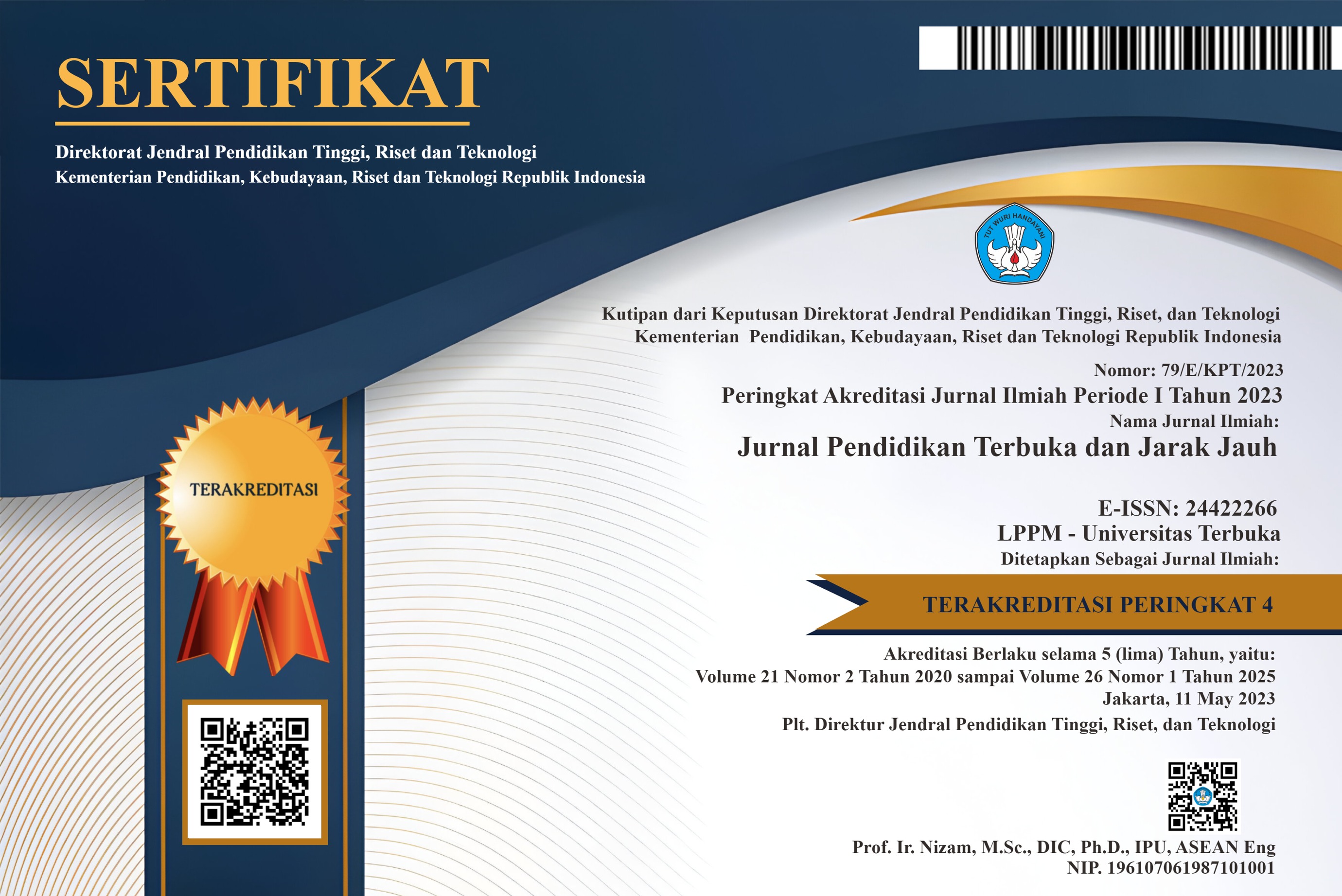METODE PENCEGAHAN PLAGIARISME PADA KELAS TUTORIAL
DOI:
https://doi.org/10.33830/ptjj.v19i2.319.2018Keywords:
creative, discussions, innovative, questions, tutorials, tutorial tasksAbstract
Plagiarism is an act of taking or stealing ideas of others, whether intentionally or not. This plagiarism can happen anywhere, by anyone, and in various forms of writing. This plagiarism is referred to as academic crime, so it must be avoided by all parties. This article will examine ways to prevent plagiarism. The scope of this study is in the Indonesian online tutorial at Universitas Terbuka. This article is written based on observations and practices in tutorial activities. In the context of this discussion, plagiarism means writing the same answers from several students during the learning activities. The similarity of answers may be obtained from similar sources. The similariries occur because there is no attempt to write with the correct citation, or paraphrase it. Therefore, it demands creativity and innovation from the tutor in conducting the learning or tutorial, both during discussion time and tutorial task. Creativity is applied in selecting and designing the problem form in discussion activities. This creativity is also related to the skills of the tutor in higher order thinking skills to the students. The concept of innovation is applied in the dynamics of the problem in the tutorial task. Dynamic tutorial will be an indicator of professional educator in performing his duties as tutor. Through the creativity and innovation of tutors, students are indirectly required to answer honestly, thoroughly, and comprehensively. Besides, students are also required to always open the material and questions, because the tutor creates the tutorial class to be dynamic, not static. In this way, the tutorial activities will be a medium and place oflearning for students and tutors.
References
Bloom, B. S., Engelhart, M. D., Furst, E. J., Hill, W. H., & Krathwohl, D. R. (1956). Taxonomy of Educational Objectives: The Classification of Educational Goals. Handbook 1 Cognitive Domain. New York: David McKay.
Direktorat Tenaga Pendidikan. (2008). Penilaian Kinerja Guru. Jakarta: Departemen Pendidikan Nasional.
Kementerian Pendidikan dan Kebudayaan. (2010, Agustus 16). Peraturan Menteri Pendidikan Nasional Republik Indonesia Nomor 17 Tahun 2010 Tentang Pencegahan dan Penanggulangan Plagiat di Perguruan Tinggi. Peraturan Menteri Pendidikan Nasional Republik Indonesia Nomor 17 Tahun 2010 Tentang Pencegahan dan Penanggulangan Plagiat di Perguruan Tinggi . Jakarta, Indonesia, Indonesia: Kementerian Pendidikan dan Kebudayaan.
Krathwohl, D. R. (2002). A Revision of Bloom’s Taxonomy: An Overview. Theori Into Practice , 212-218.
Krathwohl, D. R., Airasian, P. W., Cruikshank, K. A., Mayer, R. E., Pintrich, P. R., Raths, J., et al. (2001). A Taxonomy for Learning, Teaching, and Assessing: A Revision of Bloom's Taxonomy of Educational Objectives. . New York: Longman.
Lako, A. (2012, Juli 2). https://storage.kopertis6.or.id/. Dipetik Maret 23, 2018, dari https://storage.kopertis6.or.id/kelembagaan/: https://storage.kopertis6.or.id/kelembagaan/ARTIKEL%20PLAGIARISME%20AKADEMIK1.pdf
Utari, R. (2011). http://www.academia.edu/. Dipetik April 5, 2018, dari http://www.academia.edu/: http://www.academia.edu/download/35904082/1-Taksonomi_Bloom_-_Retno-ok-mima_abstract.pdf





